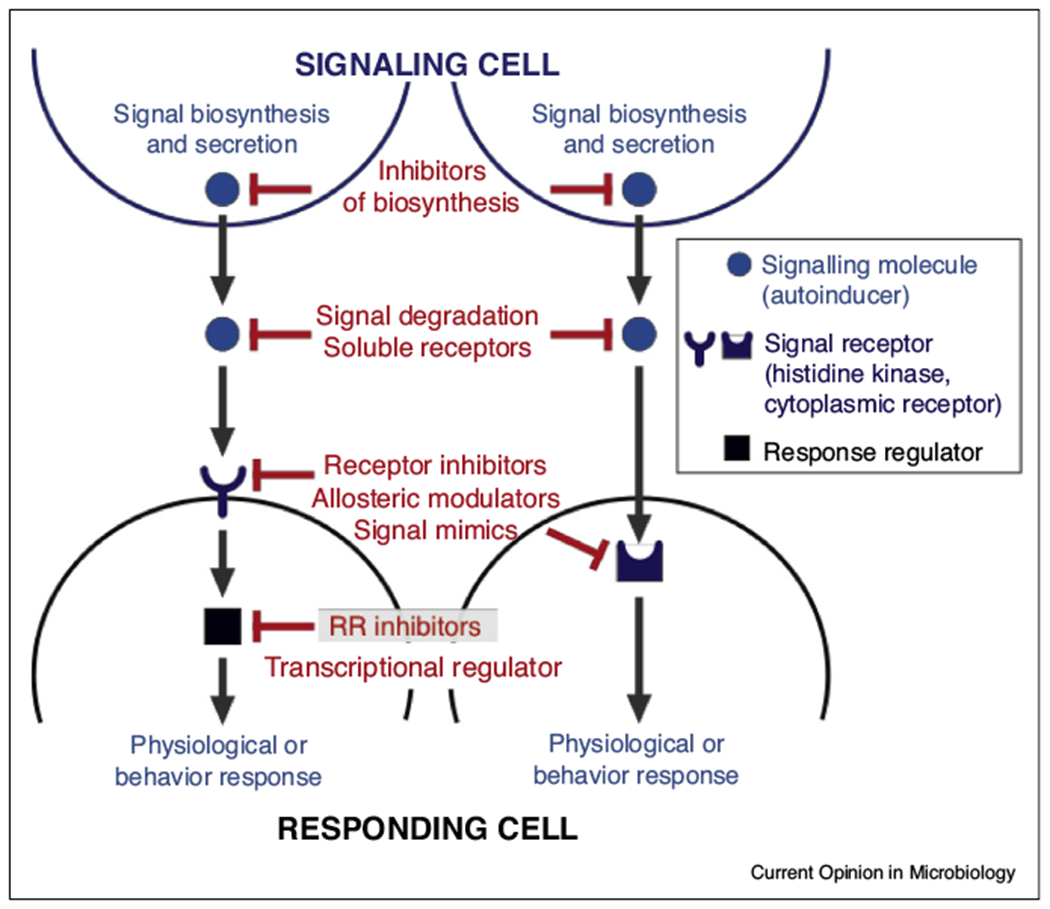Figure 1.

Basic structure of quorum sensing systems in bacteria. Quorum sensing (QS) is a form of cell-to-cell communication that enables bacterial populations to coordinate their behaviors in an environmental and cell density-dependent manner. The primary components of QS systems include the biosynthetic machinery that generates the QS signal and its cognate sensory machinery that recognizes and responds to the signal. The latter is usually a cytoplasmic receptor or histidine sensor kinase (HK), which upon its activation phosphorylates its cognate response regulators (RR). However, other transcription factors can also be inhibited. The QS cytoplasmic receptors and RRs then modulate bacterial behaviors and functions through their functions as transcription factors.
